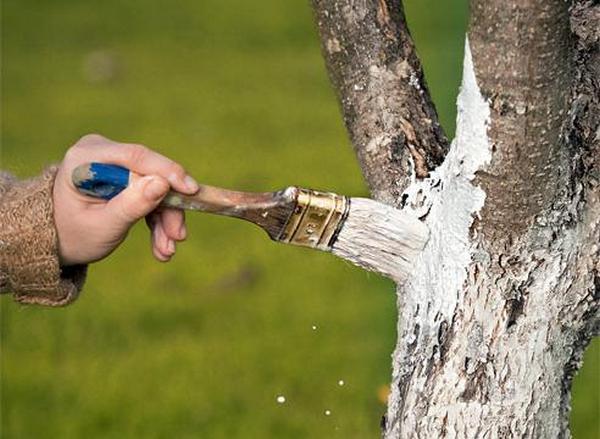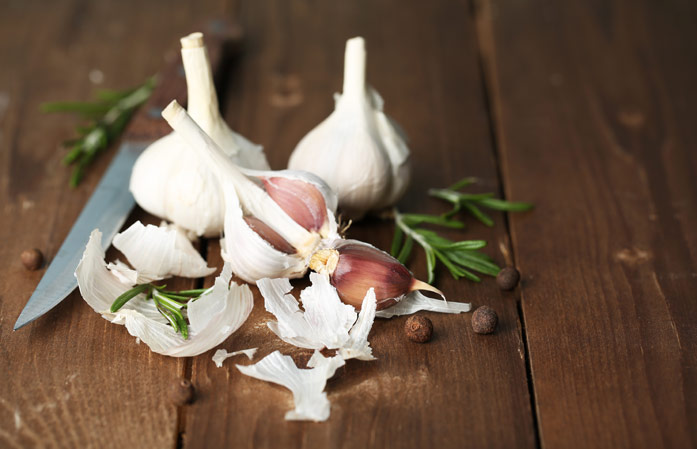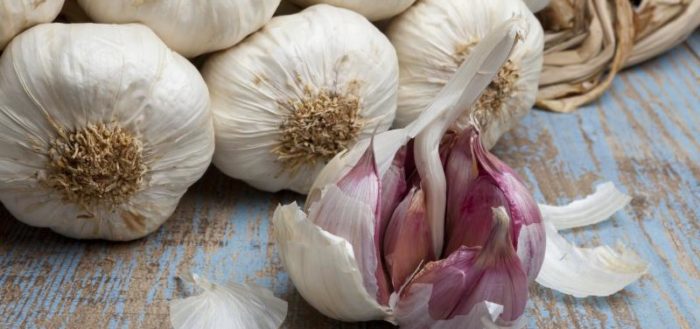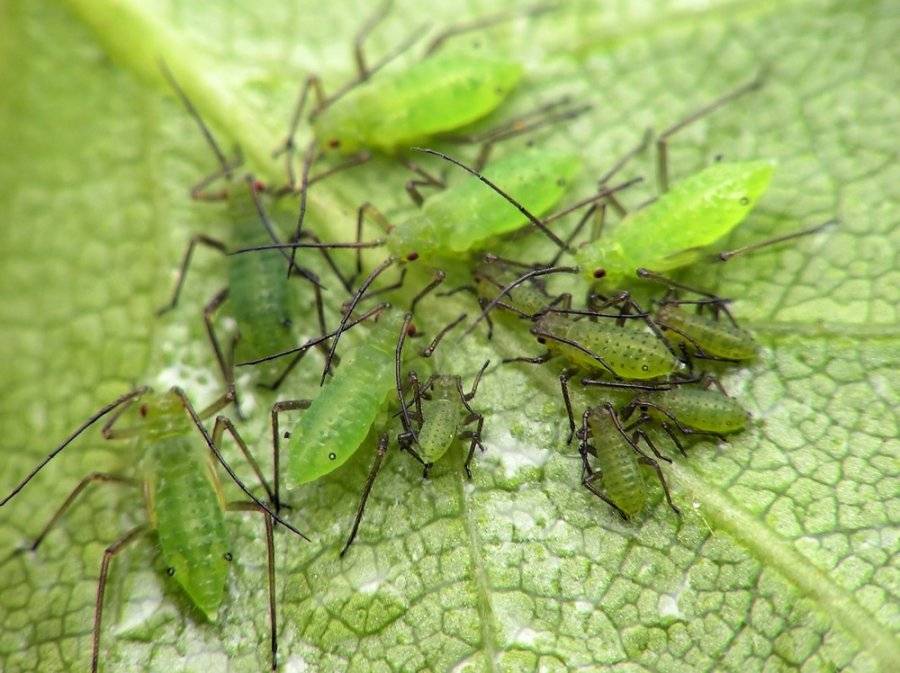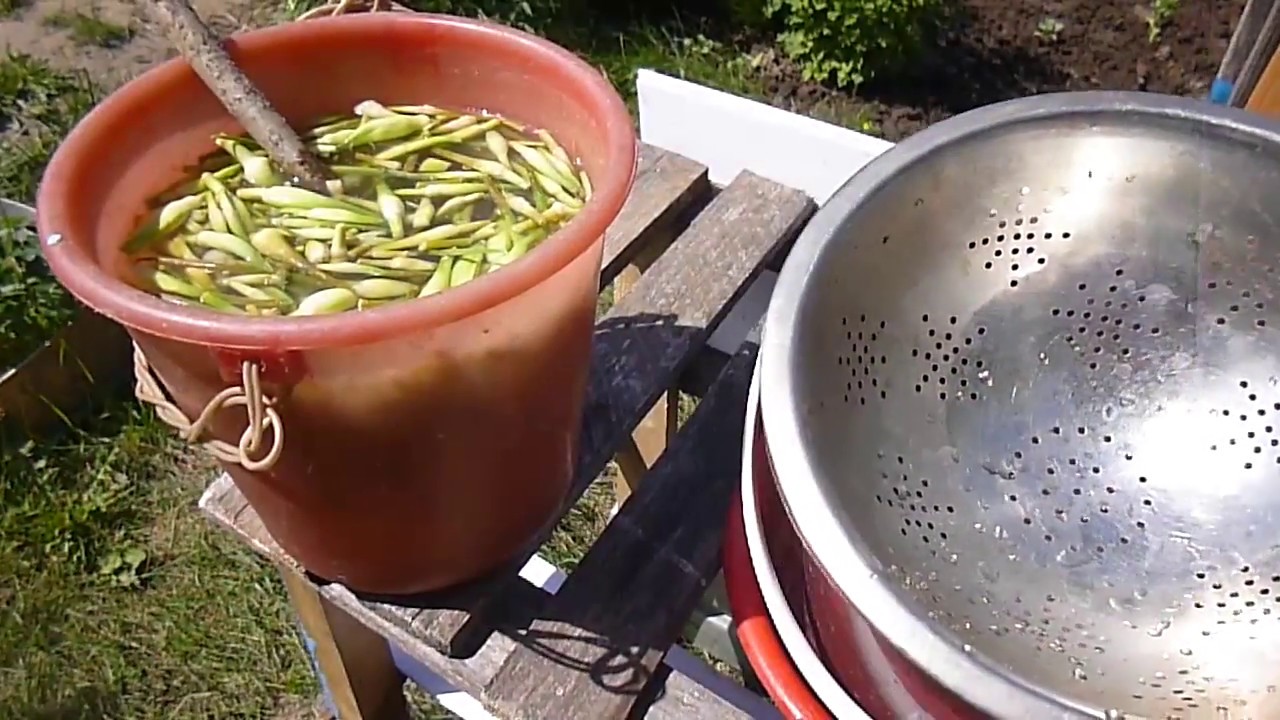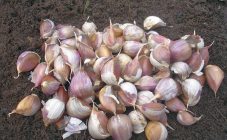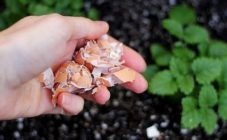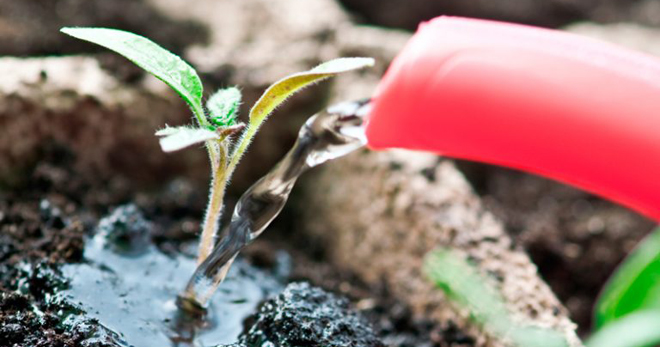Content:
The beneficial properties of garlic for the human body have been known for a long time. Also, magical properties are attributed to this plant, it is used for various rituals. The husk of garlic for a vegetable garden or garden has also found wide application. With its help, they fight many pests, carry out preventive measures against viruses and diseases, and increase soil fertility.
Where to apply the husks and stalks of garlic
The dried garlic peel helps to preserve the carrots better in winter. The fact is that if you pour such a husk over the root crop, the likelihood of the development of putrefactive processes and infections is significantly reduced.
Before whitening the tree, add garlic scales to the solution. This will greatly enhance the protective functions of the whitewash and can help get rid of some pests. Garlic saves from garden and vegetable garden pests: aphids, ticks, honeycorns, etc. To prepare the solution, you need to take 100 grams of garlic husk, 100 grams of onion husk, 10 liters of boiling water. Mix everything thoroughly and leave to infuse for 5 days, then strain and spray the shrubs and trees on the site with the resulting infusion.
When pepper, tomato, cucumber and other vegetables are planted in a permanent place of growth, then a handful of garlic husks are added to each hole. The same is done when planting potatoes in order to scare off the Colorado potato beetle and wireworm. Subsequently, the rotted garlic will be used as plant fertilizer. By the way, when the Colorado potato beetle begins to age, it is worth sprinkling the beds every week with an infusion prepared from 3 glasses of husk and 10 liters of water. Processing is carried out only in dry weather in the evening.
Garlic skins can be added to a nourishing herbal infusion that will not only be beneficial as a fertilizer. Rarely does a garden pest tolerate the pungent smell of a spicy crop. Garlic and onion infusion excludes the use of chemicals designed to combat weevils on strawberries. To prepare it, you need to take 1 glass of onion and garlic husks, pour them into a bucket of water and leave for 3 days. Processing begins at a time when buds are formed on the bushes. The procedure is repeated every 2-3 weeks until the end of fruiting.
The use of an infusion based on garlic husks makes it possible to get rid of the cabbage whites caterpillars. To prepare it, you need to fill a 0.5 liter jar with husks tightly and add to a 10-liter bucket of water. Insist for a couple of days. Preventive treatment is carried out from early May to mid-June, and then repeated in August.
The useful property of the husk is seen in the fight against carrot flies. Sometimes summer residents resort to tricks and plant carrots, onions and garlic nearby. You can prepare an infusion of 10 liters of water, 1 cup of onion and 1 cup of garlic peel. Spraying is done once every 2 weeks.
Garlic helps from garden pests, as well as from various diseases.In damp and cold summer conditions, zucchini and cucumbers are watered at the root with the prepared composition to prevent the appearance of root rot. This will require 10 liters of water and 3 full, well-tamped glasses of husk. It should be insisted for a couple of days. Consumption for 1 bush is 0.5 liters, and the frequency of treatments is 1 time per week.
When preparing nutrient mixtures for growing seedlings, gardeners often use rotted manure. It is he who can harbor bacteria and larvae of pests, which subsequently cause dangerous ailments. So, to combat black leg in seedlings, garlic and onion infusion is also used. It is prepared from 2 liters of warm water and a handful of husks, infused for a couple of days, then filtered through cheesecloth and watered before sowing seeds. After 2 weeks, the procedure is repeated.
Now that it has become clear what diseases garlic helps against, in no case should you throw away the husk. During the long and cold winter, it can be folded into a cloth bag and stored until the next summer season.
Garlic husk as fertilizer
According to reviews, you can fertilize with garlic peel not only vegetables in the garden, but also any indoor flower. If suddenly the pets suddenly began to wither and get sick, then you should be vigilant and prepare a miraculous broth for them. To do this, you need to mix in equal proportions the husks from the onion and from the garlic, and then take 2 handfuls from there and pour three liters of water. Boil for about 10 minutes, then leave for a couple of hours and drain. Spray indoor plants with the resulting broth. If midges or mold are seen in the pots, then all the pots are watered with liquid. Such a remedy will not only help scare off pests, but also serve as an excellent fertilizer.
Typically, after harvesting or peeling the heads for culinary purposes, the husks and stalks of garlic remain. Where can you apply them and how can you benefit from it? Often, excellent fertilizers are obtained from such raw materials, which also bring additional benefits: prevention of diseases and repelling pests. To prepare the fertilizer, food waste and stems are placed in a large bowl and left for a couple of weeks. After that, the mixture is thoroughly crushed in any available way and water the garden with it. The husk can be used to make liquid fertilizer. You will need to take 3 handfuls of it, pour boiling water (1200 ml) and cook for 20 minutes. After cooling, strain, pour into a bucket and water the vegetables.
Onion husk dressings are useful for any vegetables and root crops:
- carrot;
- potatoes;
- peppers;
- tomatoes;
- beet;
- eggplants, etc.
Garlic for pest control
Garlic husks are used in the garden not only as a fertilizer. Spraying with infusion from it helps to get rid of dangerous insects and their larvae, which can cause significant damage to the crop and even destroy some garden crops. This plant is popularly called a natural insecticide. In its composition, it contains phytoncides, dallylsulfite, camphor ether. Thanks to this, garlic helps from aphids, caterpillars, spider mites, etc. Infusions and decoctions based on garlic peels are prepared taking into account which particular insect they will be used against, and what concentration is required.
In order to protect garden plants, not only husks are used, but also arrows, garlic leaves. A good result is brought by planting spices near currant bushes, tomatoes, potatoes, cabbage, cucumbers, spinach, roses.By the way, the rose suffers greatly from the attack of aphids, which sucks the juices from the bush, deprives it of its decorative properties, and sometimes can even destroy it. During the period of bud formation and immediately after flowering, it is recommended to process the shrubs. Garlic also saves from spider mites, which simply cannot tolerate this culture. But garden plantings have the opportunity to strengthen their immunity and more strongly resist diseases after treatments.
Prophylactic infusion against the main pests of the garden can be prepared as follows. Take a well-filled one-liter jar of garlic husks, chop if possible, transfer to a suitable vessel and pour 0.5 liters of vegetable oil.
Folk remedies and advice
If the groundwater level on the site is located close to the soil surface, then there is a high probability of developing fungal diseases and brown rot due to increased moisture. To prevent their appearance, an infusion is prepared from raw garlic, which must first be chopped. All parts of the plant can be used. Subsequently, the resulting mass is diluted with water in a 1: 1 ratio and sent to infuse in a dark place for a week. The problem area is watered with a solution prepared from 50 ml of the resulting infusion and 10 liters of water.
To defeat the carrot fly or cucumber aphid, the following composition is prepared. The garlic herb (foliage and stems) is half filled into the bucket, the rest of the space is filled with water. All this is kept in the sun for a couple of days, after which it is sprayed with an infusion of garlic. It is useful to plant a few cloves of a spicy plant between the cucumbers to prevent the development of bacteriosis. An infusion is also prepared from its arrows, with which the aisles are subsequently watered.
Parasites that live in the soil can be destroyed using the following composition:
- 50 grams of onion husks;
- 50 grams of tobacco dust;
- 2.5 liters of water.
All this is mixed, boiled over low heat for 2 hours, insisted for another hour. Add 50 grams of garlic gruel, dilute all 5 liters of water and water the aisles in the pest habitats.
As a natural insecticide, garlic shells have their own advantages and disadvantages. The advantages include:
- environmental safety, since the drugs are prepared exclusively from natural ingredients and are not capable of causing any harm to humans and the environment;
- ease of preparation;
- ease of use;
- not addictive to pests, which allows the product to be used throughout the season.
However, garlic-based preparations have disadvantages:
- it is advisable to use them only at the initial stage of the development of diseases;
- if you exceed the proportions recommended in the recipe, you can destroy the garden culture.
Garlic is very effective as a plant fertilizer, and the waste from it remains in every home after cooking. Do not rush to throw them in the trash can, because they can be very useful. Even if you don't have your own summer cottage or garden, the flowers on the windowsill will be very grateful for such fertilization.Especially the natural insecticide is to the liking of the supporters of organic farming, who in every possible way avoid the use of chemical plant protection products on their plots. Gardening also does not stand aside and widely uses garlic waste to protect fruit bushes and trees.
